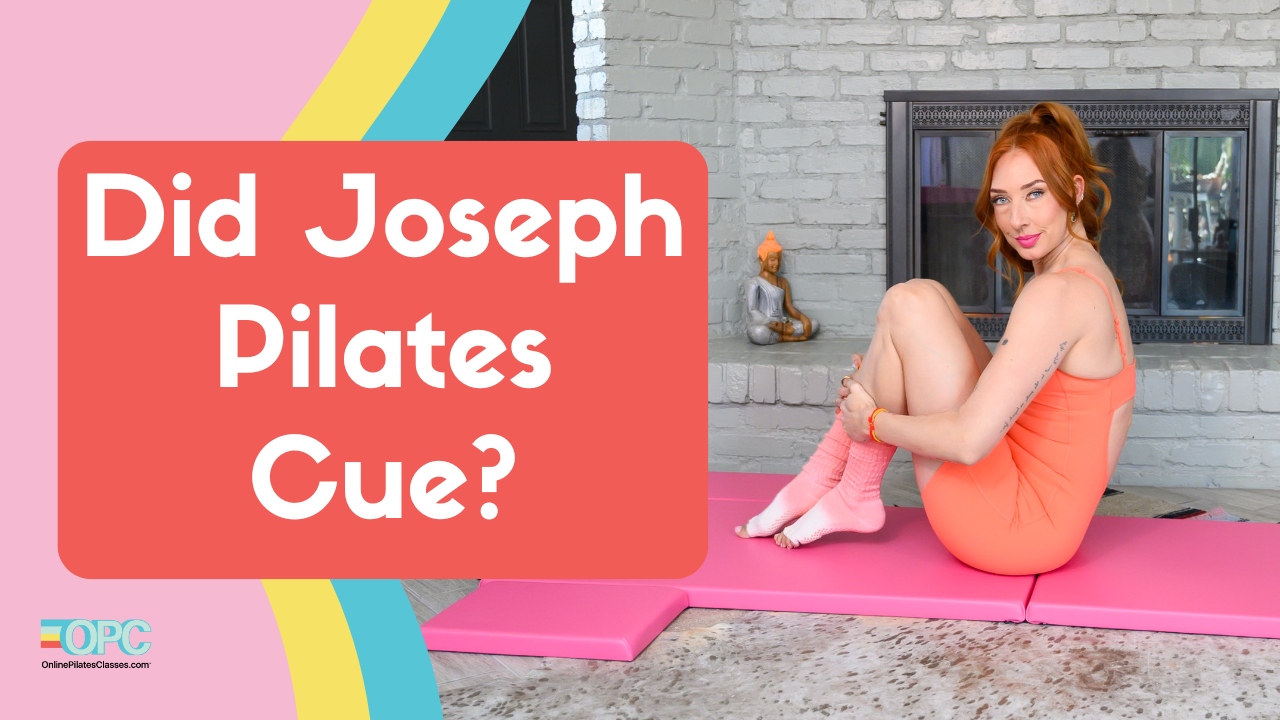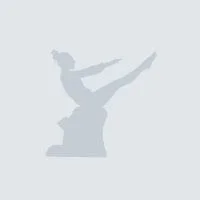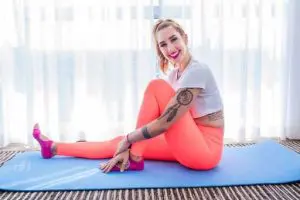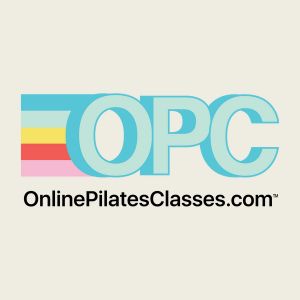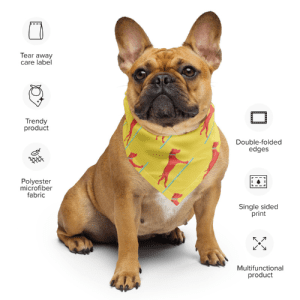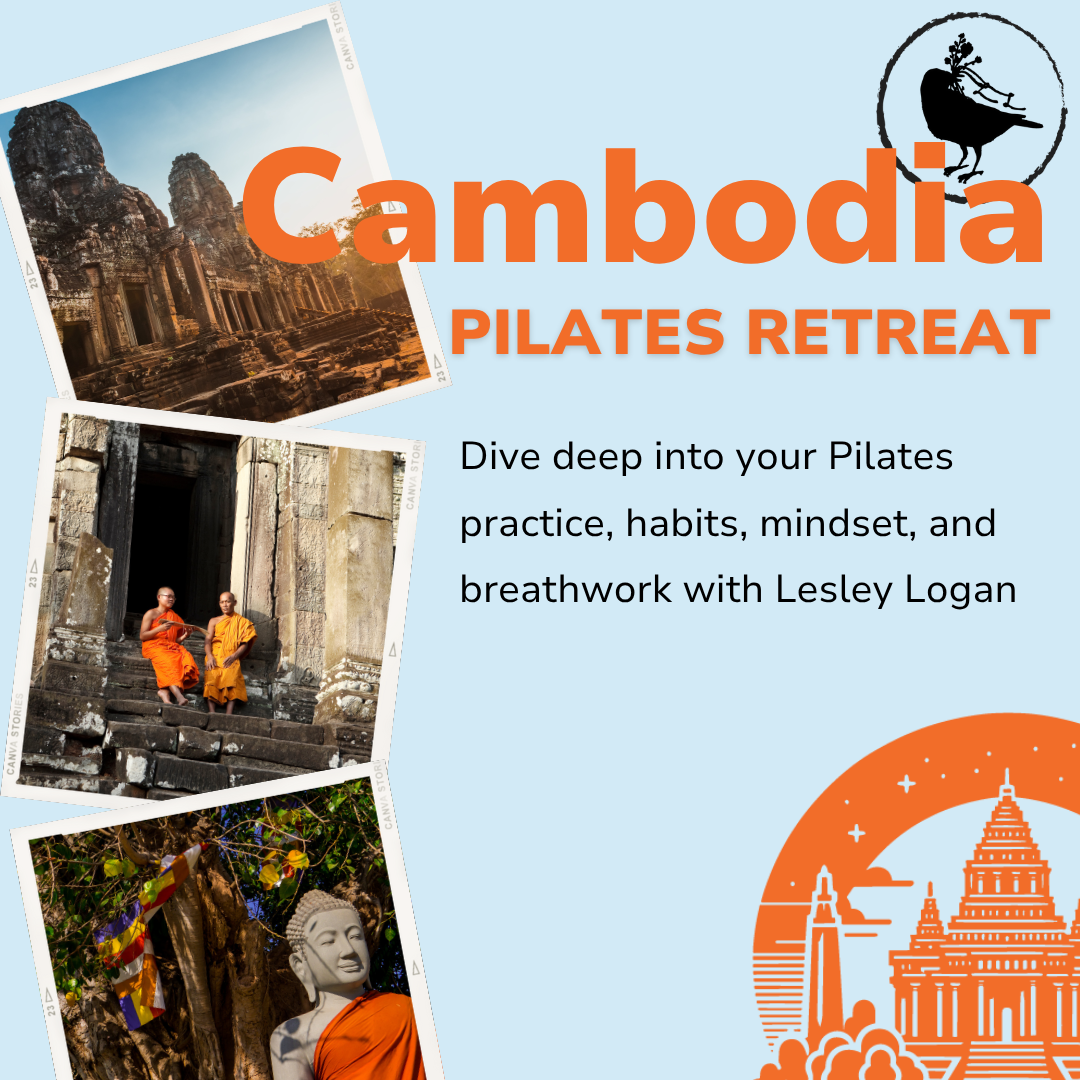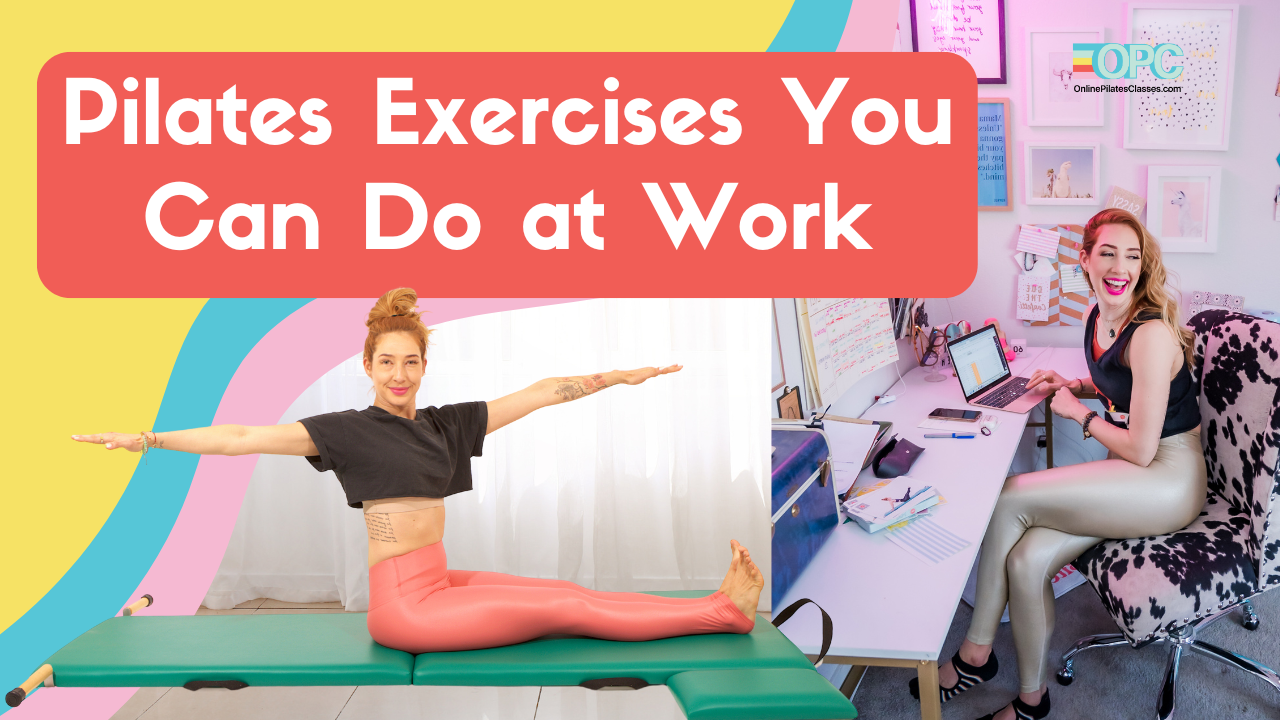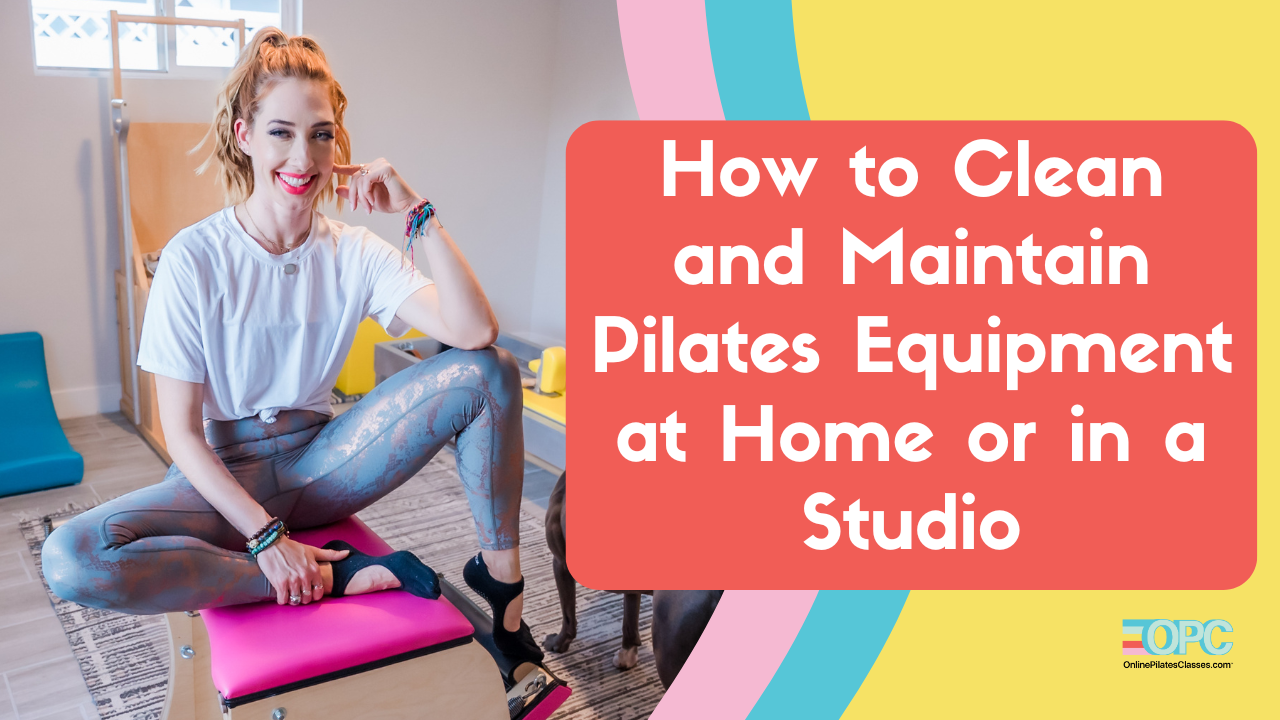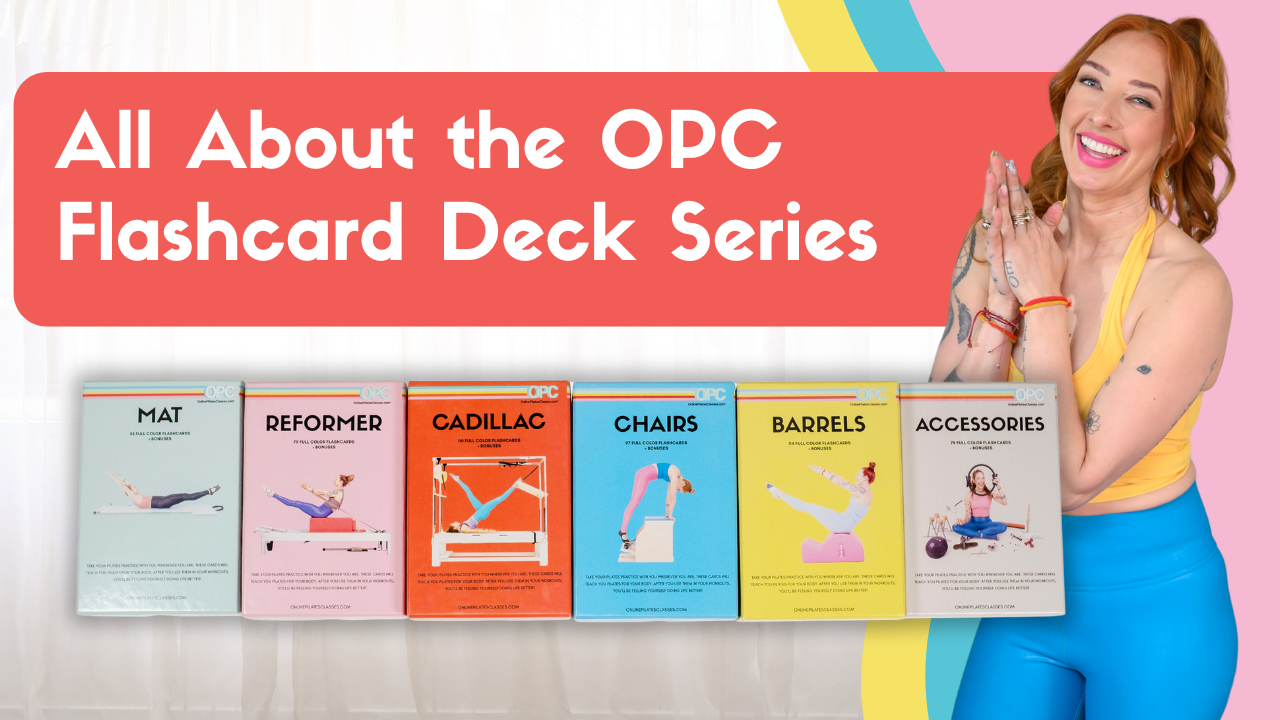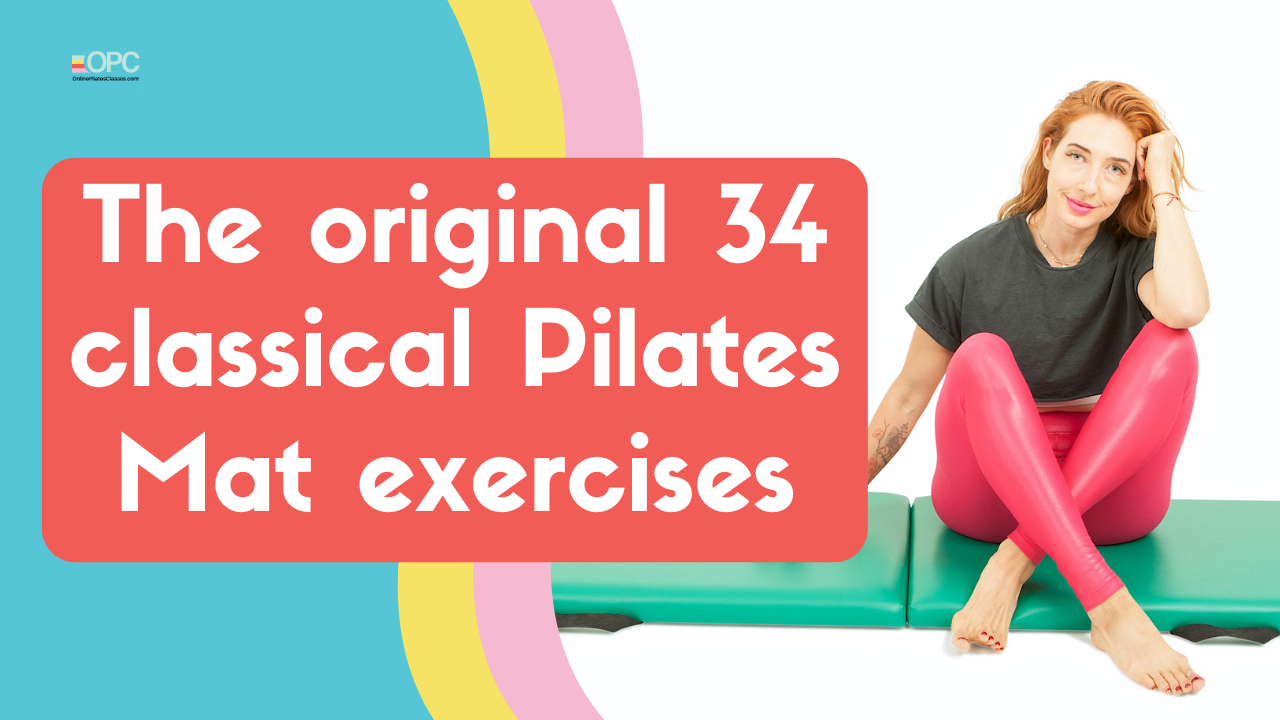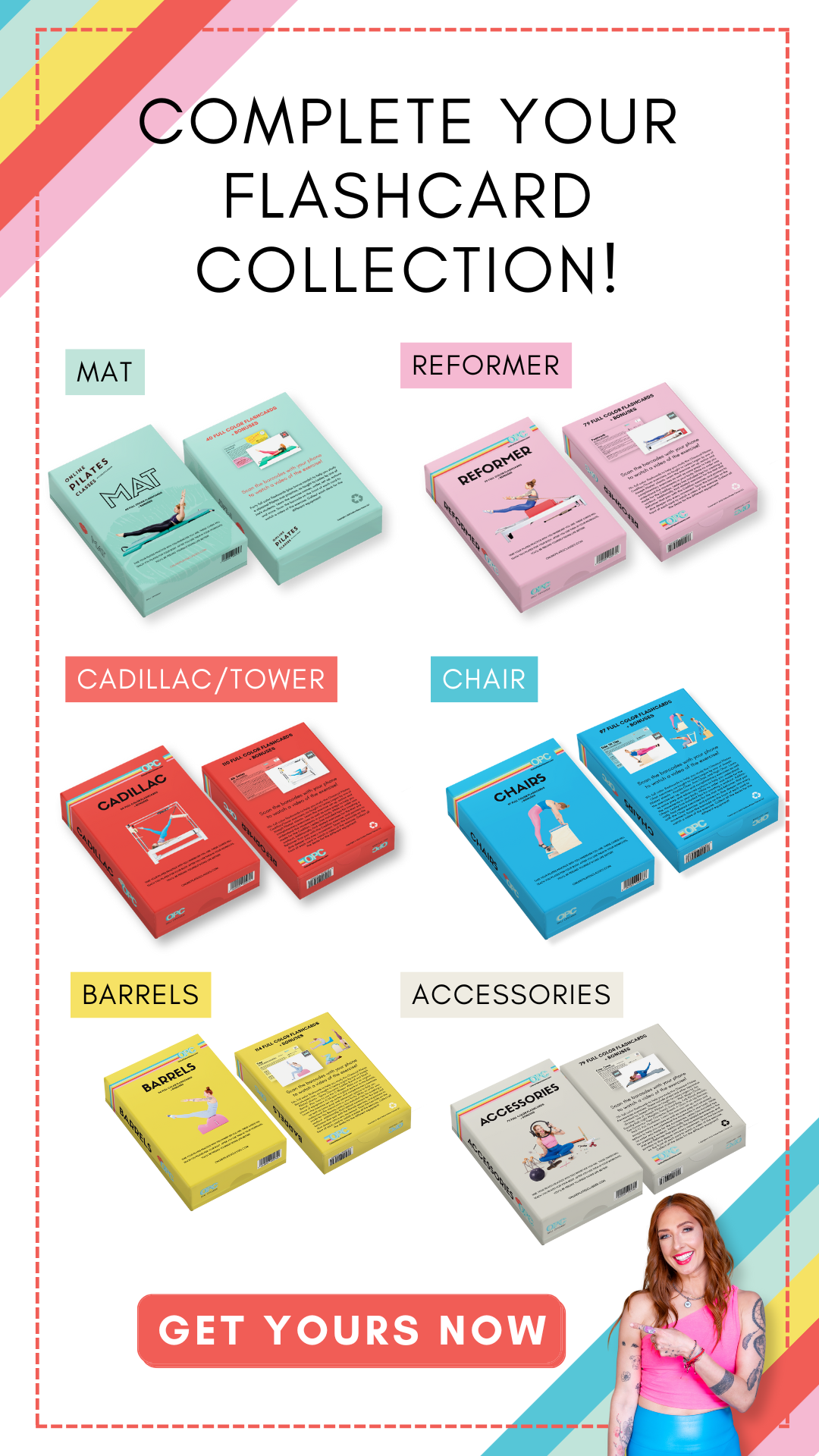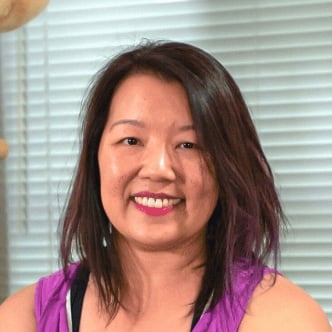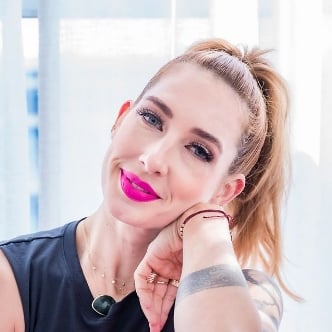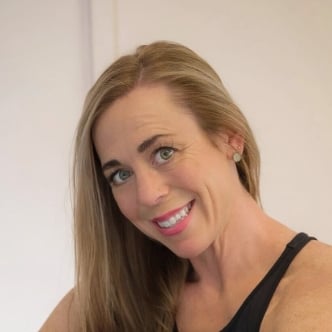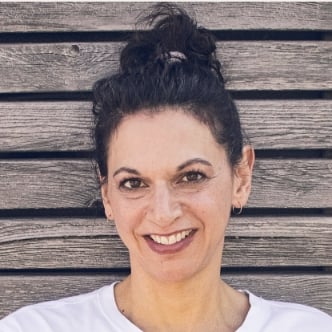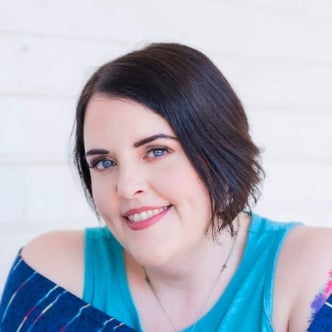Discover How Joseph Pilates Gave Cues
Hey there. Have you ever wondered how Joseph Pilates cued or corrected his clients? What did Joseph Pilates cueing actually look like—was hands-on, or did he have a lot of verbal Pilates cues or how he got his clients to do these exercises? And how does it compare to teaching today, we’re gonna dive into all of that.
Welcome to Online Pilates Classes, the most supportive Pilates community worldwide. Enjoy new weekly classes from our incredible teachers. Download the OPC app today.
If you have been to a Pilates class today, you know that there’s a lot of cueing, which is an interesting thing, because then I get a lot of questions like, what’s a good cue for this? Do you have a good cue for that? Oh, when you teach the Hundred, what’s a good cue for that? And it really made me wonder like, Well, how did Joseph Pilates cue? And also, how can we cue today to make sure our clients are really getting the most out of it? So let’s dive in.
What Kind of Cueing Did Joseph Pilates Use?
Well, let’s just take the elephant out of the room. I obviously didn’t study with Joe Pilates myself. It would be cool if I had and I would look amazing. I would see selling all my skincare lines. But all of this is from the stories I have been told from people who were in Joe’s studio. So I just want to state that, and I also want to go into a little bit about these amazing, amazing things that people have told me who were in Joe’s studio. So first of all, Joe actually didn’t use a lot of words. You have to remember, he was a German immigrant in the 20s, so English was not his first language, and also that accent was not exactly well-received. So he didn’t talk a lot. He used a lot more hands-on cueing. You’ll often hear about Joe’s pushes and pulls. He also didn’t break things down, like you didn’t get a whole breakdown of here’s what we’re gonna do, guys, and now we’re gonna do this, and now we’re gonna do that. That didn’t happen.
He also worked more with rhythm and intensity, so not a lot of slow movements. It was a lot of actually, like moving the actual body with a rhythm and flow and getting you into it. He also used exercises to teach the things he wanted his clients to understand. So if you struggle with something until you don’t do that, do this. He actually would take that information, what you couldn’t do naturally, and provide exercises for you that you could. And more specifically, when he did give verbal Pilates cues. This is something that Jay Grimes always told me. He always told you what to do. He never said don’t or not or no. He always told you what to do. It gave you an action to give you what he wanted. If you want to know more about Joe, I hope you do. We actually have the real story about Joe Pilates, so check out his history there, and enjoy.
How Joe’s Teaching Differs from Today’s Cueing Styles
Well, first of all, I just want to say a lot of people are teaching in more group classes, and so everyone’s got to try to, like, stay synchronized with what the teacher wants. So then the teacher is breaking down the exercises, building them up, giving lots of verbal Pilates cues, lots of options, a lot of options, often a lot of modifications. And this can be great for the student, especially if you have an all levels class, or several new people in there. However, learning styles show that very few people are actually auditory learners, and so having a lot of verbal cueing is actually not going to make sure that all the people in the class are gonna be able to understand things, because some people are more kinesthetic, some people are more visual. Some people are a blend of both, right? And in a more modern approach, we’re also seeing a little bit more, either the end of the spectrum being slower, more modified exercises, or we’re seeing a much more fast, intense lack of connection in classes, right?
And this differs from Joe’s approach, because actually Joe taught you your workout, and you come and do your workout, and when you came and did your workout, just like you go to a gym, right? I went to the gym the other day. I had my workout for my trainer, and on my own, I did my deadlifts, I did my benches and my back squats, I did all the things, right? And then I can tell my trainer what’s going well. She tells me what we need to work on, some of the counter exercises I need to do to strengthen some parts. That’s how Joe’s studio was. That’s why there wasn’t a ton of talking or cueing, because you were given a workout to do. You did your workout, and then when you struggled with an exercise, you were even given what you needed to do.
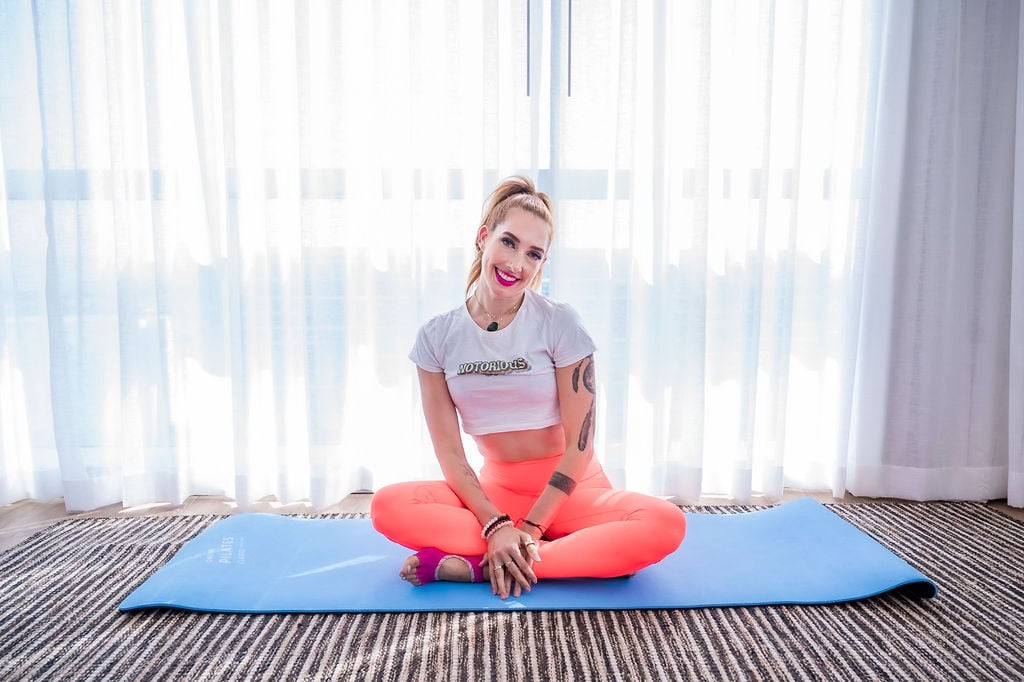
For example, Jay said that it took a month or two before he had his first correction ever from Joe, and that was, use your gut, use your center. And he hit his stomach really hard, use your center. And then Joe would give you exercises that would actually teach what he needed you to have. So instead of using words, he used the movements. And I think that there are appropriate places for everything, right? But I really like looking at Joe’s approach when it comes to how I teach, because it does allow me to hit all types of learning styles. Obviously, verbal people need to be told what to do, but then I can use kinesthetic visual options with the other exercises to get what I want out of my clients and my classes.
I also just want to reiterate, like I said, Joe didn’t teach group classes. There was individual movers at the same time in a studio, which is very different from today, where it’s mostly class-based Pilates, and so obviously, and of course, teachers are doing the best they can to make sure that everyone is being safe. And I think in a perfect world, there’d be different levels that would allow the right people doing the right classes, so that teachers could use less cueing. But since that’s not always possible, having practical Pilates instructor cueing tips is essential. If you are new to Pilates and you’re wanting to make sure that you’re doing the transitions correctly, the moves correctly, we have a great video for you, Pilates for beginners, and it will help make sure that you’re getting the most out of any class.
Why This Matters for Your Practice or Teaching
Why does this all matter for your practice, or if you’re a teacher? So if you’re a Pilates student, this matters because not every class is going to explain everything, word for word, and you may find that in a class that actually explains less, you actually get more connection to your practice, because you’d be a little more autonomous, right? Mind, body connection has to be there. If you’re a teacher, what this means is you don’t have to get the exact perfect phrase out, and that the longest explanation might not be the best explanation, right? In fact, because Pilates is a quality over quantity practice, if you’re too long-winded, it’s possible the exercise is over by the time you get your point out. And that brings me to cueing. I don’t think that cueing is a bad thing. I think it actually can be a really great thing, and can be very, very effective. But I do want to take the pressure off the teacher to come up with the perfect cue, because here’s the thing, the common Pilates cues that I say in my classes that you loved might not resonate in your class the time you use it. Why? Because they might not understand the connection they need to have, or it might work for one person but not for another person. It worked for you, but that doesn’t mean the other people who took my class it also worked for. And I think we get hung up on how to cue pilates exercises perfectly.
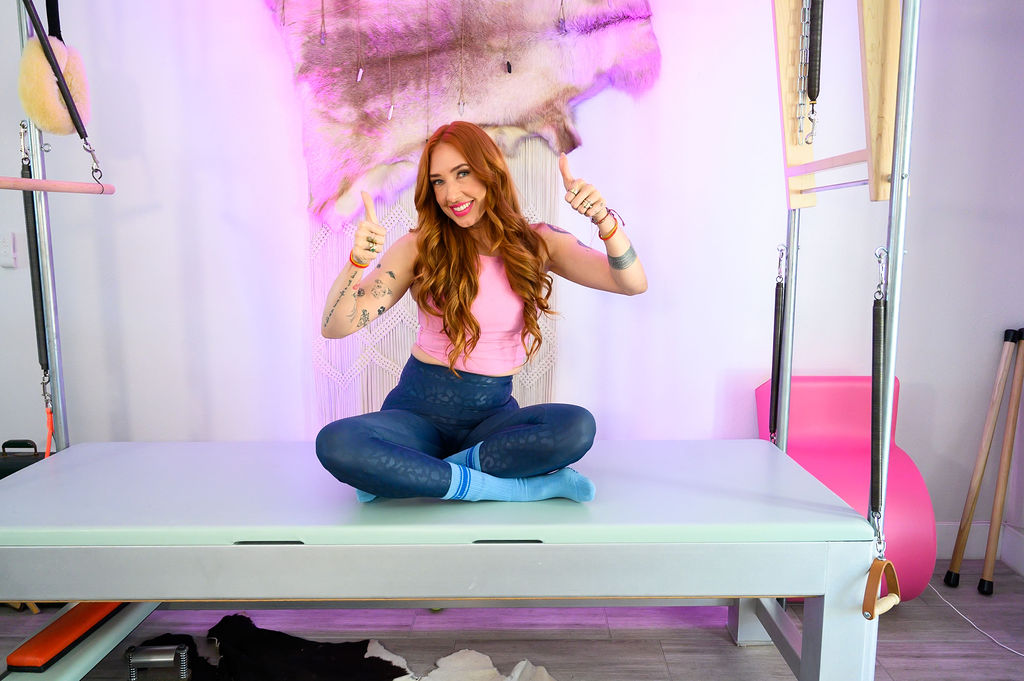
And what you actually have to do, both client and teacher, is be very present in your practice, very present in the class. What do they need? If you’re the teacher, what is happening? What is the connection that’s missing? And then that is what you can connect to and use Joe’s knowledge of what they can do? What should they do? Instead of saying, “don’t put your shoulders in your ears.” You know what needs to happen so their shoulders are on their back right, and that might be if they’re holding on to a bar, you’re actually trying to pull the bar apart, versus saying, shoulders down right? Giving them an actual direction that can help improve their practice. And if you’re a client, having a little less cueing might mean that you get to listen to your body. And then you might actually feel, Oh, I feel that in my back. Oh, hold on, I need to talk to the teacher about that. Oh, actually, I feel my center. Oh, my gosh, right, I’m gonna, I have this aha moment, and you get to have a little bit more ownership. And so I think together, if we all could just take a moment, because I think queuing has gone all the other end of the spectrum of what Joe would do and find a more happy medium what is needed for that moment in that class on that day. It’s a little harder, but it’s also a lot of fun.
How do we approach cueing at OPC?
Mostly because you might be wondering, but how do you talk less and cue presently when you’re teaching online classes and you can’t see people? You’re correct, we can’t see you. The OPC teachers and I do get to work with the community, and we get to hear what their aha moments are and what their struggles of exercises are. And we actually use, often an exercise or a thought or a concept or connection we want our OPC members to have as the theme for the class. And then we give minimal direction around the exercise, and then we use the theme of the class to be the cue for that class. So we’re not going to be able to talk to everything right? We can’t. One, we can’t see everybody. But two, if the class is more about how we connect to the center, we’re gonna focus on those things versus like, what the fingers are doing, or maybe what the toes might be doing, or a locked knee.
So there are gonna be some things we’re not gonna be able to correct or to cue. And then the following week, we have a new class. Maybe it’s all about connecting to the seat. And so things that we talked about last week, we might not bring up this week in a queue or correction, but the theme is going to focus on something new for someone, and our members then get to have autonomy, ownership and agency. Oh, last week, Rachel said this, or Lesley said this, and I got that. I’m gonna use it here, even though it’s Megan or Tami’s class. And so hopefully that makes sense. It’s a blend of making sure that our clients and our members get to have a mind-body connection without an overwhelm of cueing and direction.
OPC & eLevate: How We Approach Cueing
eLevate is my mentorship program, and this is for people who are already teachers, who want to learn what Jay Grimes taught me from Joe, like Jay learned from Joe. And I spend nine months with our eLevate members on really helping them understand how to look at what they’re seeing. So before they correct somebody at something, is that something that that person can do right? Is there an exercise that we could be giving them when they’re done with their Mat and Reformer that would actually give them the strength, the connection that they need so they can do it later? So for example, if someone is doing a Mat practice before we correct the Hundred and the Roll up and Rolling like a ball, we can actually just watch them and go, Oh, wow, they’re doing the exact same thing in all their flexion exercises. What exercises on the Cadillac, Wunda Chair, Spine Corrector would help teach what I want them to do, instead of me using my words and repeating myself all the time.
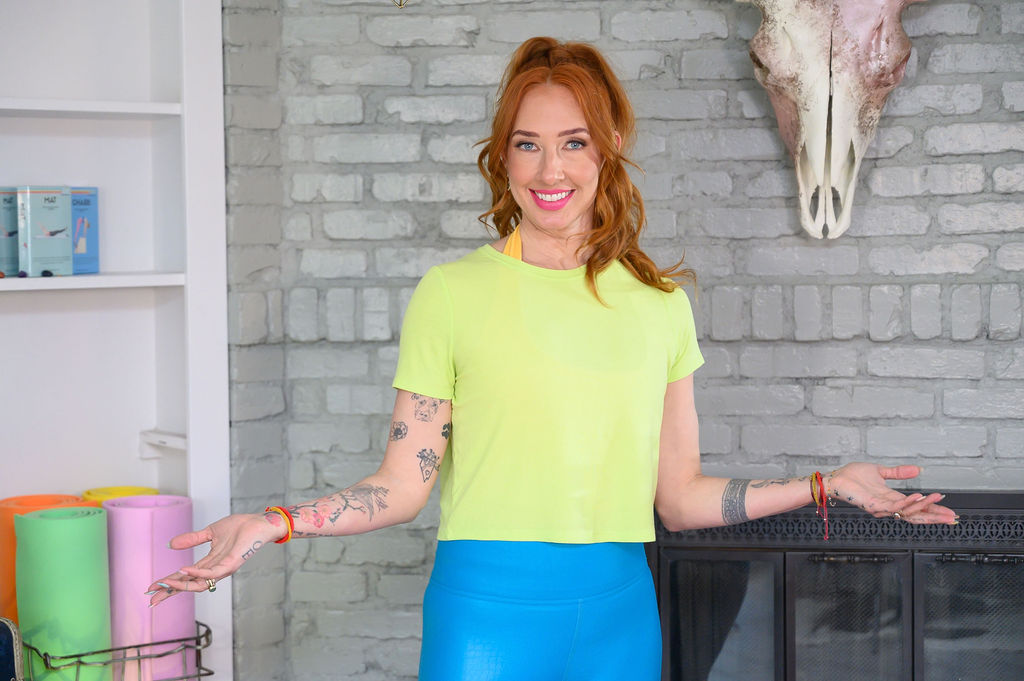
And so what it really does for the teachers is, one, boost confidence levels like crazy, but two, allows the pressure and the stress to be fixing every little thing, like a whack-a-mole, and instead be in observation, and really tailor the client session to what their body needs. And they can do this in classes, and they can do this in small groups, and it’s really quite amazing. We actually reduce the number of words that they’re using, so when they do speak, it is more powerful, more effective. And they’re also able to use the system to train the client. So it’s a blend of what Joe wanted and a more modern approach from today.
If studying with us at OPC as a client or a teacher sounds right for you, go to a really fun class we have here on YouTube. It’s a 30-minute classical Mat ordered class. It’s actually Joe’s order. And I think you’ll really enjoy the flow, the transitions. It’s a little bit more advanced. So all you have to do is replace the exercises you can’t do yet with the ones you can do. And that’s what we believe at OPC. If you are interested in eLevate my mentorship program, go to lesleylogan.co/elevatewaitlist.
Maximize Your Pilates Practice Every Day
Thank you so much for watching. I think this is a really great question, a really great topic. Of course, I wish I had been a fly on the wall in Joe’s studio, but from everything that I’ve read and understood and been told by people, I really do hope that it gave you something to think about, whether you’re a client or a teacher, to get the most of your Pilates practice, because that’s what Joe would have wanted. He would have wanted you to do your Contrology every single day to make your life better. If you want some accountability and community while doing that, join us at the OPC YouTube. Have an amazing day.

